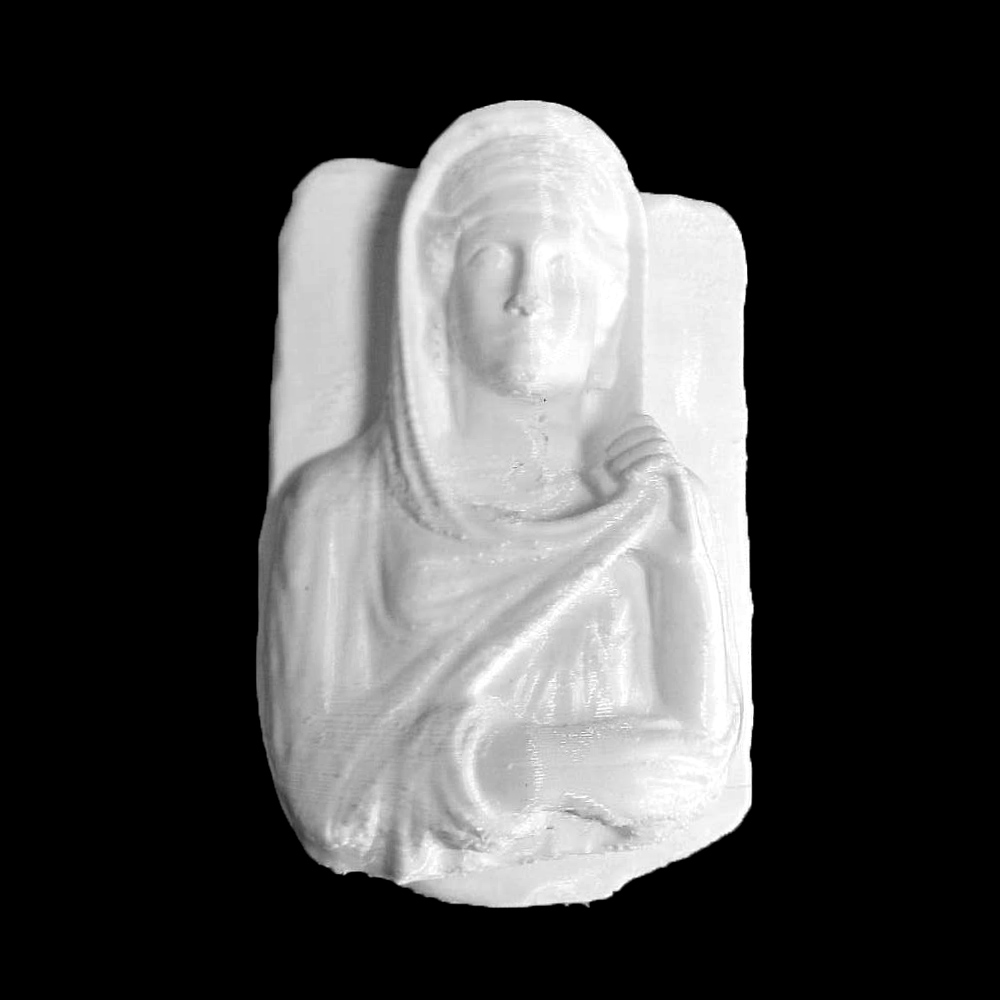
Grave Stele of Abkha (Daughter of Akhou)
myminifactory
According to an Aramaic inscription, this woman is identified as Abkha, described as "daughter of Akhou, descendant of Zebida, descendant of Ma'an." Her cry of desperation reveals that this monument honors a deceased individual. Abkha wears heavy and elaborate jewelry, adjusting her himation (cloak) which she uses as a veil over her headdress. Palmyra flourished from the first century BC due to its caravan trade between the Gulf and the Mediterranean. By the end of the first century AD, Palmyra was incorporated into the Roman Empire. In the third century, under Queen Zenobia's leadership, Palmyrene troops conquered Syria, Egypt, and attempted to take control of Asia Minor (present-day Turkey). However, Emperor Aurelian defeated the Palmyrenes in AD 272, capturing Zenobia and transporting her to Rome. The city was subsequently destroyed following a second insurrection in AD 273. Outside the city, wealthier citizens built elaborate tombs consisting of multi-story towers, single-story house tombs, and underground rock-cut tombs known as hypogea. These structures contained compartments (cubicula) within their walls to hold the deceased body, often mummified. Each cubiculum was sealed with a plaque featuring a sculptured portrait, such as this one. The jewelry depicted is typically not colored, but the white appearance of the dresses may be misleading, as they were originally brightly colored. A brief dedicatory inscription accompanied each monument. These structures were known as nefesh ("soul" or "personality") and allowed the owner to continue existing in the next world.
With this file you will be able to print Grave Stele of Abkha (Daughter of Akhou) with your 3D printer. Click on the button and save the file on your computer to work, edit or customize your design. You can also find more 3D designs for printers on Grave Stele of Abkha (Daughter of Akhou).
